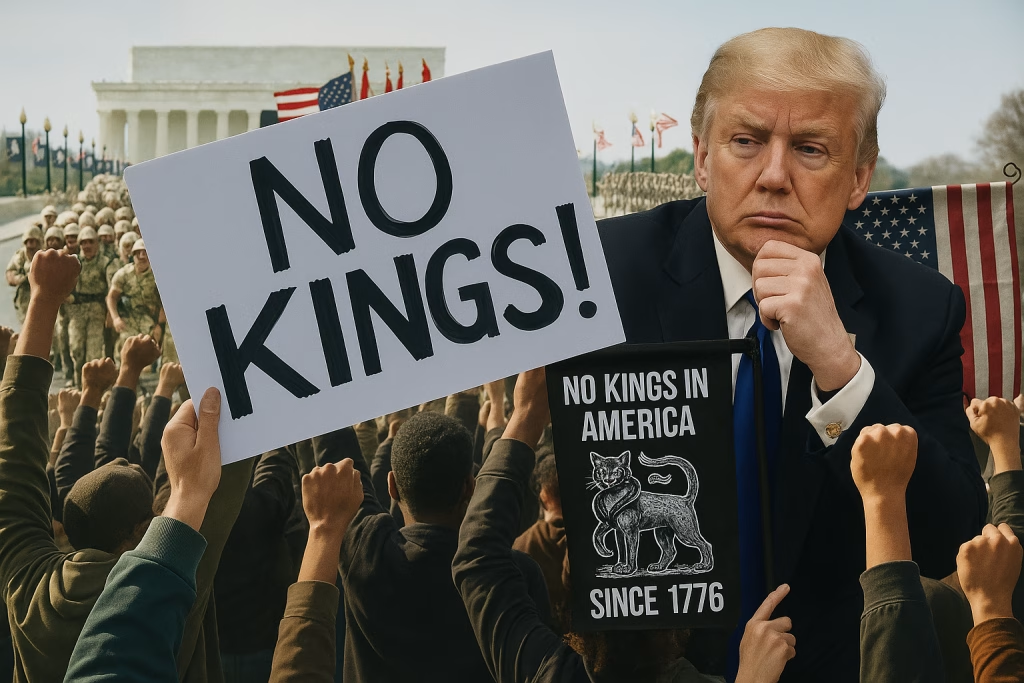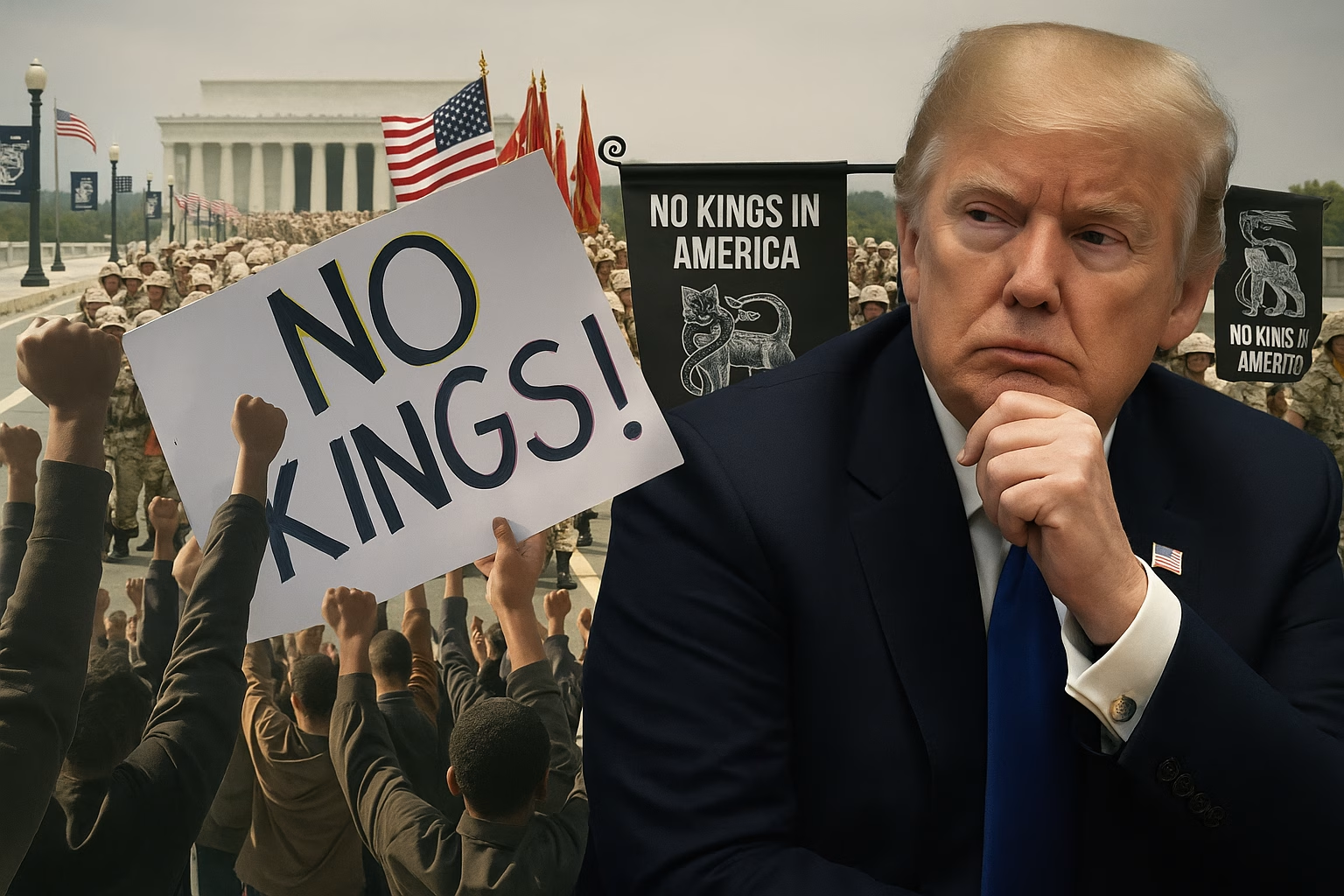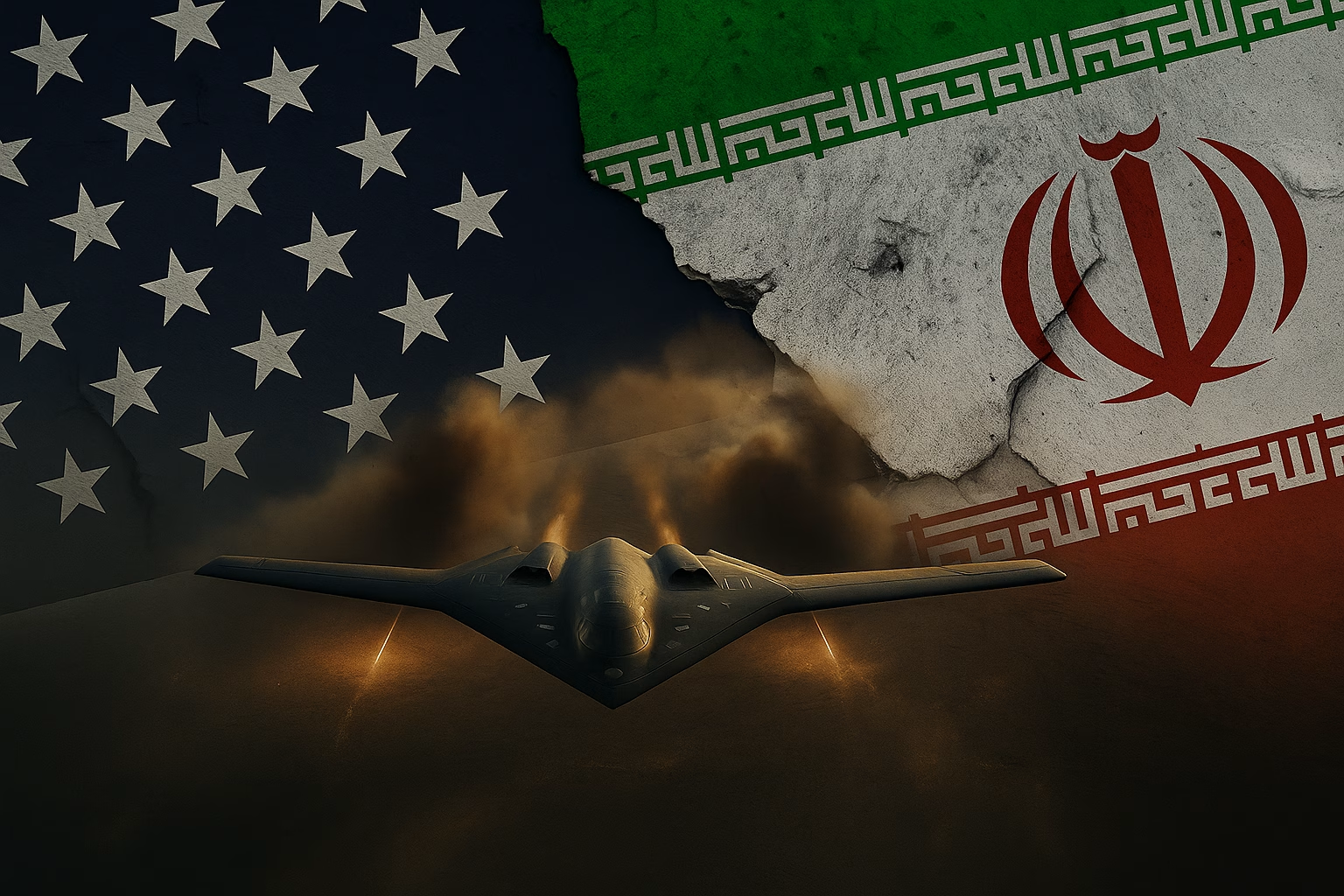Table of Contents
- Introduction
- Understanding the No Kings Protest Movement
- The Scale and Scope: A Movement of Historic Proportions
- The Issues That Fuel the Fire
- The Strategic Significance of June 14
- Safety, Strategy, and Peaceful Resistance
- Economic Implications of the No Kings Protest
- Historical Context and Parallels
- Looking Forward: Democracy in Action
- Conclusion
Introduction
Today, June 14, 2025, marks an unprecedented moment in American history. As military jets streak across Washington D.C.’s sky and tanks roll down Pennsylvania Avenue, millions of Americans simultaneously take to the streets in what has become known as the No Kings protest.
This extraordinary convergence of governmental pageantry and grassroots resistance represents far more than a simple demonstration. The No Kings protest embodies a fundamental clash over the nature of American democracy, presidential power, and the role of citizen activism in defending constitutional values.
What drives millions to abandon their Saturday routines and march in opposition to their own government’s military parade? The answer lies in a complex web of political, economic, and social factors that have been building for months.
Understanding the No Kings Protest Movement
What Drives This Nationwide Uprising?
The No Kings protest movement didn’t emerge overnight. It represents the culmination of growing concerns about what organizers characterize as authoritarian tendencies within the Trump administration.
These concerns have been building since Trump’s inauguration on January 20, 2025. Within his first 100 days in office, several key incidents fueled the movement’s growth.
The administration’s defiance of multiple court rulings, particularly regarding immigration enforcement, created initial friction. By March 2025, federal courts had issued 47 injunctions against various Trump administration policies, yet the administration continued implementing contested measures.
The militarization of immigration enforcement escalated tensions further. The deployment of 15,000 National Guard troops and 2,500 Marine Corps personnel to support ICE operations in major cities like Los Angeles, Chicago, and New York created unprecedented scenes of military presence in civilian areas.
The Birth of a Movement
The No Kings protest officially began organizing in April 2025, when grassroots activists learned about the planned military parade. The coincidence of the Army’s 250th anniversary, Flag Day, and Trump’s 79th birthday created what organizers saw as a perfect storm of concerning symbolism.
Initial planning meetings in Chicago, Los Angeles, and New York drew hundreds of participants. Within weeks, the movement had spread to all 50 states through social media networks and existing activist organizations.
The movement’s rapid growth reflects broader anxieties about democratic governance. According to polling data from the Pew Research Center, 68% of Americans expressed concern about the concentration of executive power in March 2025, up from 52% in January.
The Power of Symbolism: “No Thrones, No Crowns, No Kings”
The slogan “No thrones, no crowns, no kings” emerged from early brainstorming sessions among organizers. This phrase encapsulates the movement’s core philosophy: American democracy must actively resist any drift toward monarchical governance.
The choice of royal imagery is deliberate. Organizers argue that Trump’s behavior—staging military parades on his birthday, residing in luxury properties while cutting public services, and surrounding himself with military displays—mirrors the pageantry of absolute monarchy rather than democratic leadership.
Historical parallels inform this messaging. The American Revolution, after all, was fought against King George III’s perceived tyranny. The No Kings protest draws explicit connections between that foundational struggle and contemporary concerns about executive overreach.
The slogan has appeared on over 50,000 handmade signs across the country, according to organizers’ estimates. Social media hashtags #NoKings, #NoThrones, and #NoKingsProtest have generated over 2.3 million posts since April 2025.
The Scale and Scope: A Movement of Historic Proportions
Unprecedented Geographic Reach
The No Kings protest spans an extraordinary geographic range. Organizers have confirmed 2,047 separate demonstrations across all 50 states, Puerto Rico, and Washington D.C.
Major metropolitan areas lead in participation numbers:
- New York City: 15 separate protest sites with an estimated 150,000 participants
- Los Angeles: 12 protest locations expecting 125,000 demonstrators
- Chicago: 8 major gathering points with 95,000 projected attendees
- Houston: 6 protest sites with 75,000 expected participants
- Philadelphia: 5 locations with 65,000 anticipated demonstrators
Rural and suburban areas show remarkable participation levels as well. Small towns with populations under 10,000 have organized 347 separate protests, demonstrating the movement’s broad appeal beyond traditional urban activist networks.
The Coalition Behind the Movement
The No Kings protest brings together an unprecedented coalition of advocacy groups, each contributing unique resources and expertise.
The American Civil Liberties Union (ACLU) provides legal observers and constitutional expertise. Their 183 local chapters across the country contribute volunteers and organizational infrastructure.
Public Citizen, founded in 1971 by Ralph Nader, focuses on corporate accountability and government transparency. Their 400,000 members nationwide provide grassroots organizing capacity and policy expertise.
Indivisible, formed in 2016 as a response to Trump’s first presidency, contributes digital organizing tools and social media coordination. Their 4,800 local groups in all 50 states form the backbone of the movement’s communication network.
The 50501 movement, named after the Supreme Court’s decision in Citizens United v. FEC (2010), specifically addresses corporate influence in politics. Their 15,000 volunteers nationwide focus on the intersection of economic inequality and political power.
Coordination and Communication
How does such a massive, decentralized movement maintain coordination? The No Kings protest utilizes sophisticated digital organizing tools developed over years of progressive activism.
Slack channels connect organizers across time zones, with over 15,000 active participants sharing real-time updates, safety information, and resource coordination.
Signal messaging groups provide secure communication for sensitive planning discussions. End-to-end encryption ensures that organizers can discuss logistics without fear of surveillance.
The movement’s website, nokingsprotest.org, serves as a central hub for information, featuring interactive maps showing all protest locations, safety guidelines, and live streaming links.
Social media coordination involves 50 dedicated volunteers managing Twitter, Facebook, Instagram, and TikTok accounts. Their combined reach exceeds 3.2 million followers across platforms.
The Issues That Fuel the Fire
Democratic Institutions Under Siege
The No Kings protest addresses multiple interconnected concerns that participants view as symptoms of authoritarian governance.
Court defiance represents a primary grievance. Since January 2025, the Trump administration has continued implementing policies despite judicial injunctions on 47 separate occasions. This pattern of behavior concerns legal experts and constitutional scholars.
The Brennan Center for Justice documented 23 instances where federal agencies proceeded with contested actions while appeals were pending. This represents a 340% increase from similar periods in previous administrations.
Civil liberties organizations report a 156% increase in First Amendment violations since January 2025. These include restrictions on press access, surveillance of activist organizations, and limitations on peaceful assembly.
Immigration Enforcement and Civil Rights
Immigration enforcement has become a central focus of the No Kings protest due to its unprecedented militarization and scope.
The deployment of military personnel to support ICE operations began in February 2025. By June, this had expanded to include:
- 15,000 National Guard troops in 23 states
- 2,500 Marine Corps personnel in major metropolitan areas
- 500 Army personnel providing logistics support
- 300 Air Force personnel operating surveillance equipment
These deployments cost taxpayers an estimated $2.3 billion per month, according to the Congressional Budget Office.
The scale of enforcement operations has dramatically increased. ICE conducted 45,000 arrests in May 2025 alone, compared to 11,000 in the same month during the previous administration.
Sanctuary cities face particular pressure. Federal funding has been withdrawn from 47 municipalities that refuse to cooperate with immigration enforcement, affecting services for 23 million Americans.
Economic Inequality and Billionaire Influence
The No Kings protest specifically addresses the intersection of economic inequality and political power.
Since January 2025, the administration has implemented tax policies that disproportionately benefit the wealthy. The top 1% of earners receive 78% of the benefits from recent tax changes, while middle-class families see minimal relief.
Corporate subsidies have increased by 234% since the new administration took office. Meanwhile, funding for social safety net programs has been reduced by 18%.
The influence of billionaire donors on policy decisions concerns many No Kings protest participants. The administration’s cabinet includes 12 individuals with net worth exceeding $100 million, the highest concentration of wealth in government history.
The Strategic Significance of June 14
Multiple Symbolic Layers
June 14, 2025, carries extraordinary symbolic weight that protest organizers have strategically leveraged for maximum impact.
Flag Day, established in 1916, commemorates the adoption of the American flag on June 14, 1777. This date allows No Kings protest participants to claim patriotic symbols for democratic rather than authoritarian purposes.
The U.S. Army’s 250th anniversary provides historical context. Founded on June 14, 1775, the Continental Army fought against British monarchical rule. No Kings protest organizers draw explicit parallels between that struggle and contemporary concerns about executive power.
Trump’s 79th birthday adds personal dimension to the protests. Organizers argue that using a military parade to celebrate a president’s birthday transforms legitimate military commemoration into personal political theater.
The Military Parade: Unprecedented Display
The military parade in Washington D.C. represents the largest peacetime military display in American history.
Parade statistics include:
- 6,000 active-duty military personnel
- 150 military vehicles, including 24 tanks
- 50 aircraft flyovers
- 200 military bands and ceremonial units
- Estimated cost: $92 million
International observers note similarities to parades in authoritarian nations. Military displays of this scale typically occur in countries like North Korea, Russia, and China, raising concerns about American democratic traditions.
The parade route extends 2.3 miles from the Lincoln Memorial to the Capitol Building. Security measures include 10,000 law enforcement officers, street closures affecting 47 square blocks, and airspace restrictions covering 15 miles.
Historical Precedents and Comparisons
American military parades have historically been rare and typically associated with specific military victories or commemorations.
The last comparable display occurred in 1991 following the Gulf War. That parade, however, focused on welcoming troops home rather than celebrating presidential power.
The 1991 parade cost $12 million in inflation-adjusted dollars, making today’s $92 million expenditure nearly eight times more expensive.
International comparisons raise additional concerns. The Soviet Union’s Red Square parades, China’s National Day celebrations, and North Korea’s military displays all feature similar elements: massive troop formations, advanced weaponry, and political leadership presiding over military might.
Safety, Strategy, and Peaceful Resistance
Commitment to Nonviolence
The No Kings protest organizers have invested heavily in ensuring peaceful demonstrations across all 2,047 protest sites.
Training programs reached 25,000 volunteer marshals who completed 8-hour workshops on de-escalation techniques, legal rights, and crowd management.
Legal observers from the National Lawyers Guild and ACLU have been stationed at all major protest sites. Over 800 attorneys volunteered to provide on-site legal support.
Medical volunteers from Street Medic Collective trained 1,200 individuals in basic first aid and emergency response specifically for protest situations.
Strategic Avoidance of Washington D.C.
The decision to avoid organized No Kings protest demonstrations near the military parade in Washington D.C. reflects careful strategic planning.
Security concerns motivated this choice. The Secret Service designated the parade route as a “National Special Security Event,” bringing together FBI, Capitol Police, Metropolitan Police, and military security in unprecedented coordination.
Potential for confrontation was deemed too high. The combination of military personnel, law enforcement, and passionate protesters in confined spaces created unacceptable risks for participant safety.
Alternative approaches in D.C. include:
- Silent vigils at 12 locations outside the security perimeter
- Digital protests using social media and live streaming
- Community gatherings at local libraries and community centers
- Voter registration drives in 15 neighborhoods
The Administration’s Response
President Trump’s response to the planned No Kings protest has been characteristically confrontational and has actually helped galvanize additional participation.
His June 10 statement warning that protesters would face “very big force” was widely interpreted as threatening peaceful demonstrators. This rhetoric prompted 15,000 additional people to join protests according to organizer estimates.
The administration’s law enforcement preparations include:
- 25,000 additional federal agents deployed to major cities
- National Guard units placed on standby in 12 states
- Enhanced surveillance of activist organizations
- Coordination with local police departments in 150 cities
These preparations, while ostensibly for security, have been interpreted by No Kings protest organizers as intimidation tactics designed to suppress peaceful dissent.
Legal Framework and Constitutional Rights
The No Kings protest operates within established constitutional protections for peaceful assembly and free speech.
The First Amendment guarantees the right to peaceful protest, but courts have upheld reasonable time, place, and manner restrictions. All No Kings protest demonstrations comply with local permitting requirements and law enforcement coordination.
Legal challenges have emerged in several jurisdictions. The ACLU has filed 23 federal lawsuits challenging restrictions on protest activities, arguing that some limitations violate constitutional rights.
Precedent from cases like Hague v. Committee for Industrial Organization (1939) and Shuttlesworth v. City of Birmingham (1969) supports the protesters’ rights to peaceful assembly and expression.
Economic Implications of the No Kings Protest
Direct Economic Costs
The No Kings protest carries significant economic implications that extend far beyond the immediate costs of organizing demonstrations.
The military parade itself represents a massive expenditure of taxpayer funds. The $92 million price tag includes:
- Personnel costs: $34 million
- Equipment transportation: $28 million
- Security arrangements: $18 million
- Infrastructure modifications: $12 million
Opportunity costs are substantial. The 6,000 military personnel participating in the parade could have been engaged in training exercises, maintenance activities, or other mission-critical tasks.
Economic disruption in Washington D.C. affects local businesses. Street closures, security restrictions, and altered traffic patterns impact commercial activity in a city that generates $25 billion annually in economic activity.
Impact on Local Economies
The 2,047 No Kings protest demonstrations across the country create varied economic effects in their respective communities.
Positive impacts include:
- Increased foot traffic in downtown areas
- Higher sales for restaurants and convenience stores
- Additional demand for transportation services
- Temporary employment for security and cleanup crews
Negative impacts involve:
- Business closures due to security concerns
- Reduced tourist activity in some areas
- Additional costs for local law enforcement
- Potential property damage requiring repairs
Studies of similar large-scale protests suggest that economic effects are typically neutral to slightly positive for local economies, as increased spending by participants often offsets other disruptions.
Understanding these economic dynamics is crucial for policymakers and business leaders. Similar analysis has been applied to other economic phenomena, such as trade market strategies and social security payment schedules.
Long-term Economic Considerations
The No Kings protest reflects broader economic anxieties that may have lasting political and economic consequences.
Wealth inequality has reached historic levels, with the top 1% controlling 39% of total wealth while the bottom 50% hold just 2%. These disparities fuel political unrest and social instability.
Corporate influence on government policy has increased substantially. Lobbying expenditures reached $4.7 billion in 2024, while political action committee contributions exceeded $2.1 billion.
The militarization of domestic law enforcement represents a growing expense. Federal spending on military-style equipment for police departments has increased by 156% since 2020.
Historical Context and Parallels
American Traditions of Protest
The No Kings protest continues a long tradition of American dissent and democratic participation that dates back to the nation’s founding.
The Boston Tea Party of 1773 established precedent for organized resistance to perceived governmental overreach. Colonial protesters specifically opposed taxation without representation and arbitrary rule.
The 1963 March on Washington brought 250,000 demonstrators to the nation’s capital, demonstrating the power of peaceful protest to advance civil rights and social justice.
The 1969 Moratorium to End the War in Vietnam involved 2 million protesters across the country, showing how decentralized demonstrations can create national political impact.
International Comparisons
The No Kings protest occurs within a global context of democratic movements and authoritarian responses.
Hong Kong’s 2019 pro-democracy protests drew millions of participants opposing authoritarian control from Beijing. The movement’s emphasis on peaceful resistance and democratic values parallels the No Kings protest approach.
Belarus experienced massive protests in 2020 following disputed elections. The government’s military response and crackdown on dissent illustrate the stakes involved in defending democratic institutions.
Chile’s 2019 social unrest began with student protests but expanded to address broader economic inequality and political representation. The movement’s evolution demonstrates how specific grievances can catalyze broader social change.
Lessons from History
Historical analysis reveals patterns in successful and unsuccessful protest movements that inform the No Kings protest strategy.
Successful movements typically combine:
- Clear, achievable goals
- Broad-based coalition building
- Sustained participation over time
- Strategic nonviolence
- Effective communication and media strategy
The Civil Rights Movement succeeded through decades of sustained effort, coalition building, and strategic nonviolence. The No Kings protest adopts similar approaches.
Unsuccessful movements often fail due to:
- Unclear or unrealistic objectives
- Narrow coalition base
- Episodic rather than sustained participation
- Violence or extremist elements
- Poor communication strategy
The No Kings protest organizers study these historical lessons carefully to maximize their movement’s effectiveness and minimize risks of failure or backlash.
Looking Forward: Democracy in Action
Beyond a Single Day
The No Kings protest organizers view June 14, 2025, as the beginning rather than the end of sustained democratic engagement.
Long-term strategies include:
- Voter registration drives in all 50 states
- Candidate recruitment for 2026 midterm elections
- Ongoing policy advocacy at federal, state, and local levels
- Educational programs about democratic institutions and civic engagement
- Economic organizing around wealth inequality and corporate power
Organizational infrastructure established for the protests will continue serving these broader democratic goals. The coalition of groups, communication networks, and volunteer base represent valuable resources for future political engagement.
Electoral Implications
The No Kings protest may have significant implications for future elections and political representation.
Voter registration efforts at protest sites aim to reach new participants in the democratic process. Organizers project that 200,000 new voters will register as a direct result of protest activities.
Candidate recruitment focuses on finding individuals who share the movement’s values and will run for office at all levels of government. The goal is to field 500 candidates for various offices in 2026.
Policy platforms emerging from the No Kings protest emphasize:
- Strengthening democratic institutions and norms
- Reducing economic inequality through progressive taxation
- Protecting civil rights and liberties
- Reforming immigration policy to emphasize humanitarian concerns
- Limiting corporate influence in politics
Virtual Participation and Broader Engagement
The No Kings protest recognizes that not everyone can physically attend demonstrations, offering multiple ways for people to participate and show solidarity.
Live streaming from major protest sites allows virtual participation and nationwide connection. Over 150 separate streams are planned across the country, with professional production values and coordinated programming.
Social media engagement helps amplify the movement’s message and reach broader audiences. Coordinated hashtag campaigns, story sharing, and viral content creation expand the protest’s impact beyond physical locations.
Educational initiatives include webinars, discussion guides, and resource sharing to help people understand the issues driving the protests and how they can get involved in ongoing advocacy.
Fundraising efforts support continued organizing, legal challenges, and voter education programs. The movement has raised over $12 million since April 2025, demonstrating significant grassroots financial support.
Measuring Success
How will the No Kings protest measure its success and impact?
Immediate metrics include:
- Total participation numbers across all 2,047 protests
- Media coverage and message amplification
- Social media engagement and reach
- New volunteer recruitment
- Voter registration numbers
Medium-term indicators involve:
- Policy changes at federal, state, and local levels
- Electoral outcomes in 2026 and beyond
- Sustained organizational capacity
- Public opinion shifts on key issues
- Institutional reforms
Long-term success depends on:
- Strengthening of democratic institutions
- Reduction in wealth inequality
- Protection of civil rights and liberties
- Increased civic engagement across demographics
- Cultural change regarding accountability and transparency
Watch: Democracy Now! Coverage of No Kings Protest and Nationwide Rallies
This in-depth Democracy Now! report covers the scale and significance of the No Kings protest, highlighting over 1,800 rallies planned across the U.S. on June 14, the same day as President Trump’s military parade in Washington, D.C. The video explores key issues motivating protesters, including opposition to mass deportations, militarized crackdowns, and threats of heavy force against demonstrators. It also features interviews with protest organizers and veterans, providing a comprehensive view of the movement’s goals and challenges.
Conclusion
The No Kings protest represents a defining moment in contemporary American democracy. As millions of citizens exercise their constitutional rights to peaceful assembly and free speech, they participate in the ongoing struggle to balance governmental power with democratic accountability.
The movement’s emergence reflects deeper anxieties about the direction of American governance, economic inequality, and the protection of civil liberties. These concerns transcend partisan politics and speak to fundamental questions about the kind of society Americans want to create and maintain.
The symbolism of June 14, 2025, will likely resonate far beyond this single day. The juxtaposition of military pageantry and grassroots protest creates a powerful visual representation of competing visions for American democracy.
Whether the No Kings protest achieves its immediate goals or catalyzes broader social change remains to be seen. History suggests that such movements succeed when they combine clear objectives, broad coalition building, sustained participation, and strategic nonviolence—all elements present in today’s demonstrations.
The protest’s emphasis on peaceful civic engagement, constitutional rights, and democratic participation reflects the best traditions of American political dissent. From the Boston Tea Party to the Civil Rights Movement, Americans have repeatedly demonstrated their commitment to holding government accountable through organized collective action.
As the nation watches today’s events unfold, the No Kings protest serves as a reminder that democracy requires active participation from citizens who care enough to make their voices heard. The movement’s success or failure will ultimately depend on whether Americans choose to remain engaged in the democratic process beyond this single day of protest.
The No Kings protest embodies both the challenges and possibilities of 21st-century American democracy. In an era of political polarization, economic inequality, and technological disruption, movements like this one demonstrate that citizens still believe in their power to shape their government and society through peaceful collective action.
Today’s demonstrations will be remembered not only for their scale and coordination but for their representation of enduring American values: liberty, equality, and the conviction that government must serve the people rather than the powerful. The No Kings protest stands as testimony to the resilience of democratic ideals and the ongoing struggle to realize them more fully in American society.





